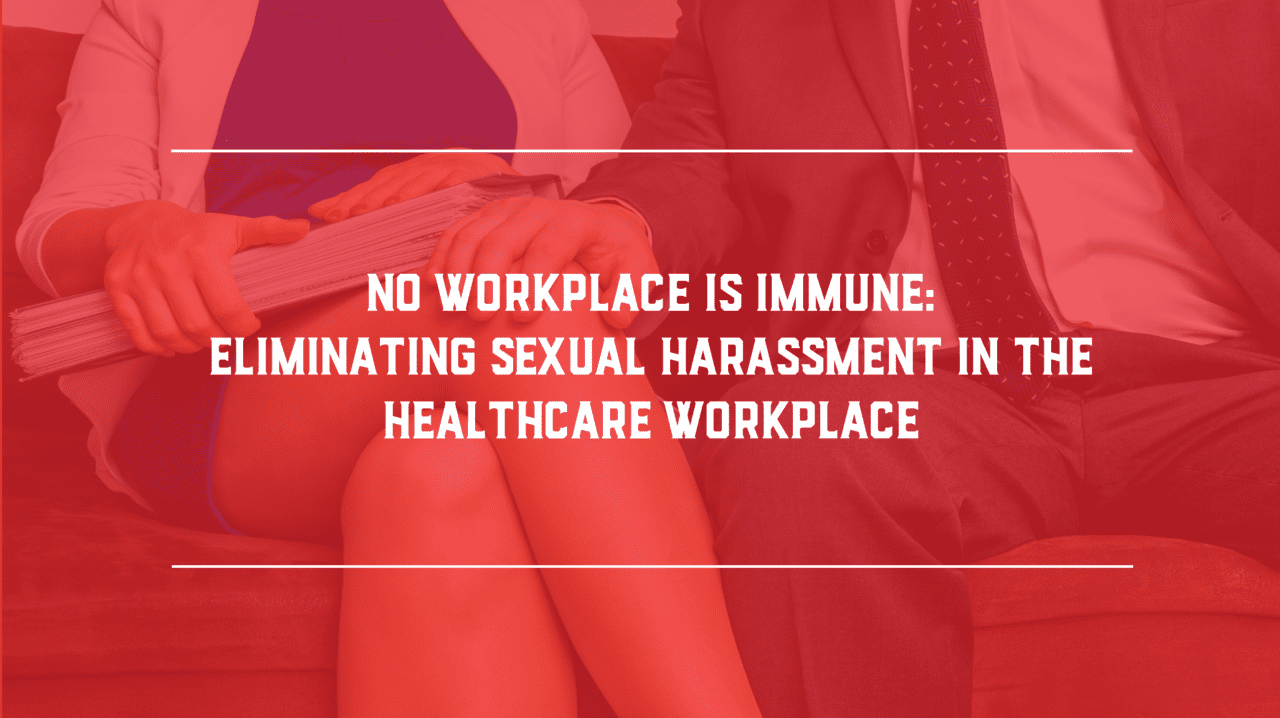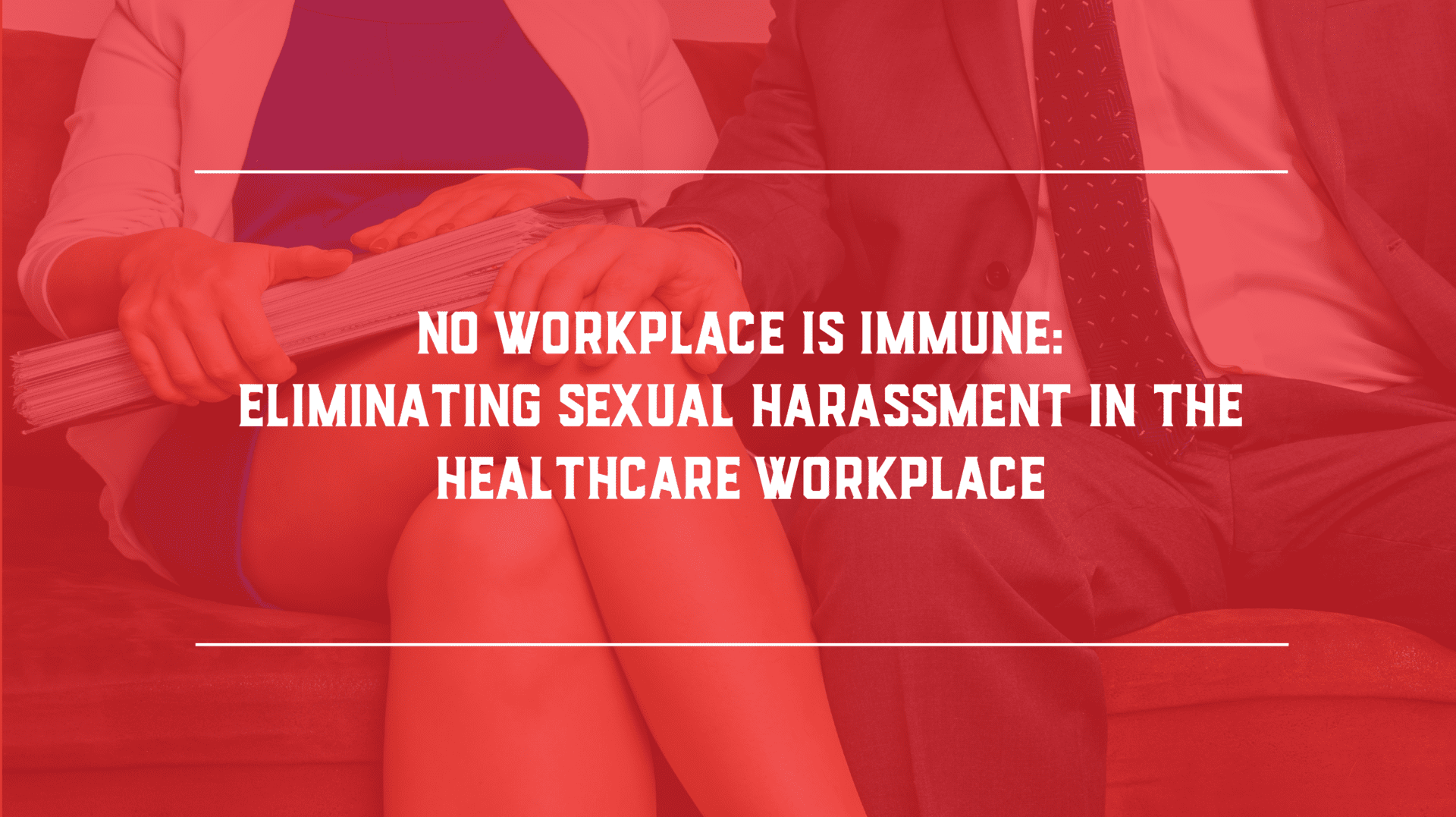By Karle Stinehour
(Estimated Reading Time 4 min.)
Filling knowledge gaps and building awareness in the workplace. It’s how DigitalChalk serves acute and non-acute healthcare providers. Today, we look at some of the risks posed by sexual harassment and at how you can take the necessary steps to address and eliminate abuse in your workplace.
In recent months, the many high-profile stories of sexual harassment and abuse have shocked all of us. In the wake of the Bill Cosby and Harvey Weinstein scandals, a whole host of allegations surfaced from actors and actresses in Hollywood claiming abuse and harassment. Additionally, over 150 girls and women accused Larry Nassar, the former doctor for USA Gymnastics and Michigan State University women’s athletics, of sexual abuse. Nassar was found guilty and sentenced up to 175 years in prison and Michigan State University president Lou Anna Simon resigned under pressure. However, not every case of sexual harassment is as public as these. In fact, most of them aren’t.
Unfortunately, the healthcare industry is not immune. Shocking allegations of sexual harassment and abuse by colleagues, superiors, and even patients, are becoming commonplace. According to Becker’s Hospital Review, approximately 170,000 sexual harassment claims were filed between 1995 and 2016. In comparison, the two other largest industries, restaurants and hotels, reported 10,057 and 1,713 claims respectively (Source: “At least 3,085 hospital employees filed sexual harassment complaints…,” Becker’s Hospital Review). In addition to, and perhaps even more important than, the high costs of litigation, “sexual harassment in health care can adversely affect employee health and, by extension, patient safety.” (Source: “#MeToo in Medicine? Sexual Harassment in Healthcare,” Relias)
So what do you do? Since sexual harassment and abuse often occur in private settings, either can be extremely difficult to detect and resolve. DigitalChalk can help you see the signs and eliminate the problem.

Staying Silent Is Not an Option
Legally speaking, sexual harassment is defined as “unwelcome sexual advances, requests for sexual favors, and other verbal or physical harassment of a sexual nature” (Source: “Sexual Harassment,” EEOC). Because sexual harassment is very broadly defined, it is often difficult to spot the symptoms and put an end to them in a way that adheres to the law and company policy alike. But that doesn’t mean that you can’t be aware of what is going on in your work environment. Remember, sexual harassment and abuse are never acceptable and we must make every effort to eradicate them from our workplace.
Case Studies
The following examples of sexual abuse and harassment cases within the healthcare industry drive home to all of us the damage this pervasive issue causes to individual lives and potentially to entire healthcare systems.
- Catholic Healthcare West in San Francisco: In one of the largest sexual harassment claims on record, the San Francisco-based healthcare system received a ruling of $168 million. Catholic Healthcare West lost the suit after a physician’s assistant filed claims because a surgeon repeatedly directed sexual language at the physician’s assistant and routinely touched her inappropriately. (Source: “#MeToo in Medicine? Sexual Harassment in Healthcare,” Relias).
- Medscape Medical News Poll: 71 percent of polled nurses said that patients have sexually harassed them. (Source: “For nurses, sexual harassment is ‘par for the course’,” NBC News).
- Fenway Community Health Center: In December 2017, CEO Stephen L. Boswell resigned from the Massachusetts health center after the mishandling of a sexual harassment case. After a local newspaper released a story claiming that Boswell allowed a doctor to keep working in the hospital for four years after a suit was filed against him. In light of the allegations, the board of directors urged Boswell to resign. (Source: “CEO of health center resigns over handling sex harassment complaints against doctor,” FierceHealthcare).

Practical Steps That Make a Difference
Any time you are made aware of sexual harassment, you are now involved with the situation and you must know the appropriate responsible actions to take. You do not have the option to stay silent. Staying silent means that you become part of a problem that is not going away by itself. Failing to address sexual harassment decreases the safety of the workplace and increases the likelihood of employee loss and/or litigation. As a manager or a supervisor, you are responsible for maintaining the high standards of your workplace. But, addressing sexual harassment issues with sensitivity can seem a formidable task.
A critical first step is documenting a process to follow in the event of alleged sexual harassment.
In addition, strong adherence to the following guidelines helps ensure the privacy of the people involved and minimize the risk of litigation and financial loss to the company.
- Keep any information you receive confidential. You must be as discreet as possible.
- Communicate to the offender that their behavior is unacceptable. You should do this as soon as you are made aware of the situation to enforce that the behavior will not be tolerated.
- Review the investigation process and your retaliation policy with the employees who come to you with information.
- If the behavior does not stop, get Human Resources involved. Alert HR because they are trained specialists who will know the proper legal and compliance procedures for dealing with a problem like this.
- Create a safe work environment. This is one of the most important things you can do as a supervisor. Employees are more likely to stay in a job where they feel safe. You help to create a safe environment when you clearly communicate to everyone that inappropriate behavior is not tolerated and that all harassment issues will be addressed quickly and confidentially.
- Train your staff. Provide training to help employees know how to behave appropriately at work and the steps they should take to report and resolve sexual harassment.
Let us help with some heavy lifting. On-demand training courses from our online course library can help bolster your learning and development program in this important area.
